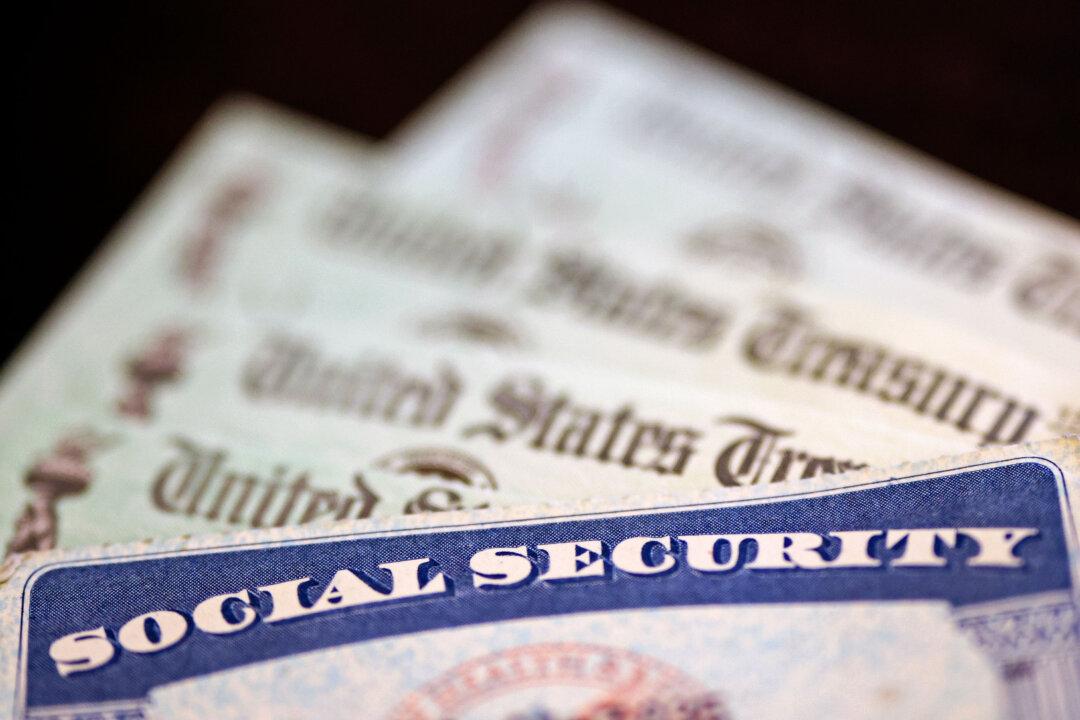In February, business activity growth ‘came close to stalling,’ said an S&P report.
The U.S. 10-year Treasury yields fell on Feb. 26 as worries about the economy and concerns about the effects of Trump administration policies weigh on the minds of some investors.
On Feb. 25, the
yield hit 4.283 percent, the lowest level since mid-December 2024. Yields got that low marginally on Feb. 26 trading, hitting 4.281 percent. The 10-year Treasury, seen as a sign of investor sentiment regarding the U.S. economy, recovered later that day and was trading at 4.303 percent as of 11:10 a.m. EST. The Treasury went on an upsurge from early December, hitting a peak by mid-January. Since then, yields have dropped by about 50 basis points.
Concerns about the state of the U.S. economy are popping up as weak economic data come in. The University of Michigan’s consumer
sentiment index, for example, declined this month to its lowest level since November 2023. The reading came as a surprise, suggesting higher pessimism among consumers.
Meanwhile, a recent
report from S&P Global said U.S. business activity growth “came close to stalling” this month.
“New order growth also weakened sharply and business expectations for the year ahead slumped amid growing concerns and uncertainty related to federal government policies,” the report stated.
“Optimism about the coming year slumped to its lowest since December 2022, except for last September, when business was unsettled by uncertainty ahead of the presidential election.”
However, there are also positive signs about the state of the economy. In the first quarter of the year, optimism among U.S. CEOs surged from the previous quarter to the highest level in three years, according to a recent
survey from The Conference Board.
“There was a notable increase in the share of CEOs expecting to increase investment plans and a decline in the share expecting to downsize investment plans,” Stephanie Guichard, senior economist of global indicators at the think tank, said.
Fewer chief executives ranked issues such as cyberthreats, financial and economic risks, regulatory uncertainty, and supply chain disruptions as “high-impact” risks in the first quarter of 2025 compared with the fourth quarter of 2024, according to Roger W. Ferguson Jr., chair emeritus of The Conference Board.
Recession Warning, Inflation Concerns
Commenting on the roughly 50 basis-point decline in 10-year Treasurys from early January, Joseph Brusuelas, chief economist at RSM US LLP,
said on social media platform X that “one rarely observes this type of move especially as inflation expectations increase.”
Dave Mazza, the CEO of Roundhill Investments,
said on X that the “U.S. 3-month/10-year yield curve is on the verge of another inversion.”
“Previously, inversion has preceded recessions in the 2000s and, more recently, the 2020 recession during the COVID-19 pandemic,“ he wrote. ”Is the U.S. economy on course for a recession or is this a false alarm?”
JP Morgan is expecting yields in developed markets to “grind lower” through 2025, according to a Dec. 17
report.
“In the U.S., there could be more room for the front end of the [yield] curve to outperform as the Fed eases through the third quarter of 2025,” it said.
The bank forecasts U.S. 10-year yields to decline to a low of 4.1 percent in the third quarter of 2025, rebounding to 4.25 percent by the end of the year.
Inflationary concerns can cast a shadow over economic performance, affecting yields. When there are worries about economic growth, investors flock to treasuries as a safe haven, driving down yields amid high demand for these investments.
The 12-month annual
inflation rate rose for the fourth straight time in January, hitting the 3 percent level for the first time since June 2024.
During the January meeting of the policy-making Federal Open Market Committee, Federal Reserve officials said they
expect rate cuts to be paused until more progress on inflation is seen.
Despite that it “eased significantly” over the past two years, “inflation remained somewhat elevated ... relative to the committee’s 2 percent longer-run goal, and progress toward that goal had slowed over the past year,” according to the
minutes of the meeting.







